The delivery apps reshaping life in India’s megacities
From 7 a.m. until well past dusk, seven days a week, N. Sudhakar sits behind the counter of his hole-in-the wall grocery store in the south Indian city of Bangalore. Packed floor to ceiling with everything from 20-kilogram sacks of rice to one-rupee ($.01) shampoo sachets, this one-stop shop supplies most of the daily needs for many in the neighborhood. It's a carbon copy of the roughly 12 million family-run kiranas" found on almost every street corner in India.
The shop is on a busy street in the Whitefield district, formerly a quiet suburb but now a major hub for the city's booming IT industry. When Sudhakar, who is 49, opened the store 20 years ago, offices had just started going up. Business picked up quickly thanks to an influx of construction workers, followed by IT employees. Now apartment blocks loom behind his shop, housing hundreds of workers employed in the tech parks that dominate the surrounding area.
These days, the same technology industry that helped Sudhakar's business thrive is presenting stores like his with a new challenge. Across the road, a steady stream of delivery drivers line up to grab groceries from a dark store"-a mini-warehouse located in the heart of the city and built to enable ultra-fast deliveries. It's run by Dunzo, a Bangalore-based startup, and the service is in such wide use it's now a verb unto itself-Bangaloreans who need something ferried across the city will dunzo it," using the company's app to book an on-demand motorcycle courier.
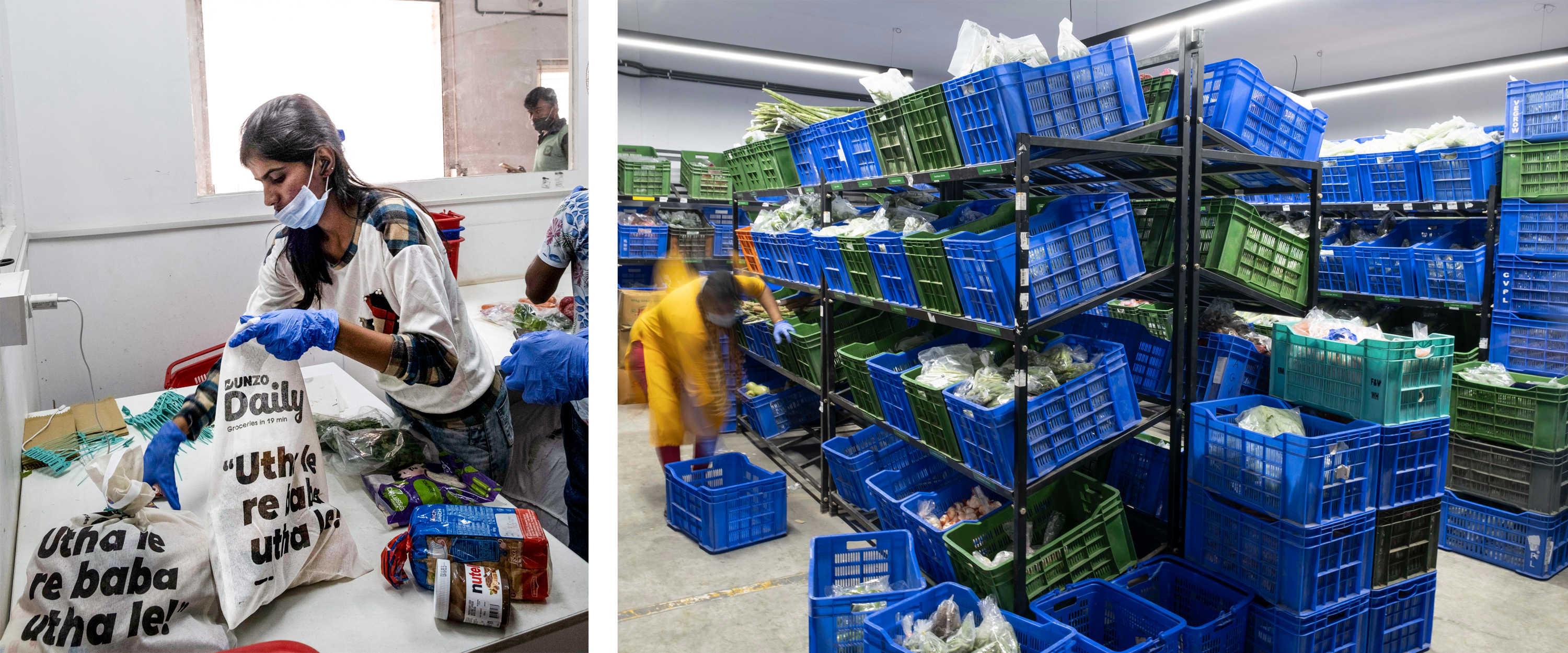 Orders in a Dunzo Daily facility are packed by hand, but machines help, using image recognition to automatically assess thequality of fresh produce.APARNA NORI
Orders in a Dunzo Daily facility are packed by hand, but machines help, using image recognition to automatically assess thequality of fresh produce.APARNA NORIDunzo lets users order pickups from nearby shops, but more recently it has pivoted into the rapidly growing market for instant groceries. It's an increasingly crowded space. Borrowing from the playbook of Western companies like Instacart, Gopuff, and Gorillas, which deliver daily essentials right to your door, a slew of local firms are vying for a piece of India's $620 billion grocery market, many of them now promising delivery times of just 10 minutes. Their goal in many cases is explicit: they want to eat into the kiranas' dominant share of top-up" purchases that customers make in between bigger bulk shopping trips.
They've got a long road ahead. Today, kiranas account for more than 95% of India's grocery market, according to research published in March by the consulting firm Redseer. Modern supermarkets still account for only about 4%, even though they first appeared 30 years ago, and online groceries haven't cracked 1% in a decade. Roughly two-thirds of India's 1.3 billion people live in rural areas largely untouched by these more modern forms of retail.
But in India's megacities, change could come quickly. Years of aggressive marketing, steep discounts from e-commerce players like Amazon and home-grown Flipkart, and a heavy dose of covid lockdowns have gotten the urban middle class hooked on online shopping. These shoppers make up a fraction of the population, but their spending power is considerable, and in more affluent pockets of big cities the battle for India's street corner is well underway.
Sudhakar is dismissive of the hive of activity across the road from his shop and says he doesn't really see Dunzo and its ilk as an immediate threat. But he admits that around half his customers now shop online, and he does worry what this trend could mean for his business and others like it in the future. It will affect us," he says. They have more investment. They have more money. They have a better network."
An Indian institutionA kirana isn't any old convenience store, says B.S. Nagesh, founder of the Trust for Retailers and Retail Associates of India (TRRAIN), a charity that supports retail workers. They are tightly integrated into their local communities, normally serving at most a few hundred families. Many of us have grown up with the kiranas. It is just an extension of our kitchen," he says. The shopkeeper knows us by name, he knows us by family. He is not only a person who serves us, but tomorrow, if there is a need, he actually helps you out. Kiranas have become an integral part of the society."
This close connection to their neighborhoods allows kiranas to provide a service crucial to many customers: credit. The shopkeeper will note down their purchases in a small notebook called a bhai khata," and the balance is normally settled on a weekly or monthly basis. Large parts of the Indian economy operate on this kind of informal credit, says Rajat Agarwal, a professor of management studies at the Indian Institute of Technology Roorkee, and cash flow is often a problem.
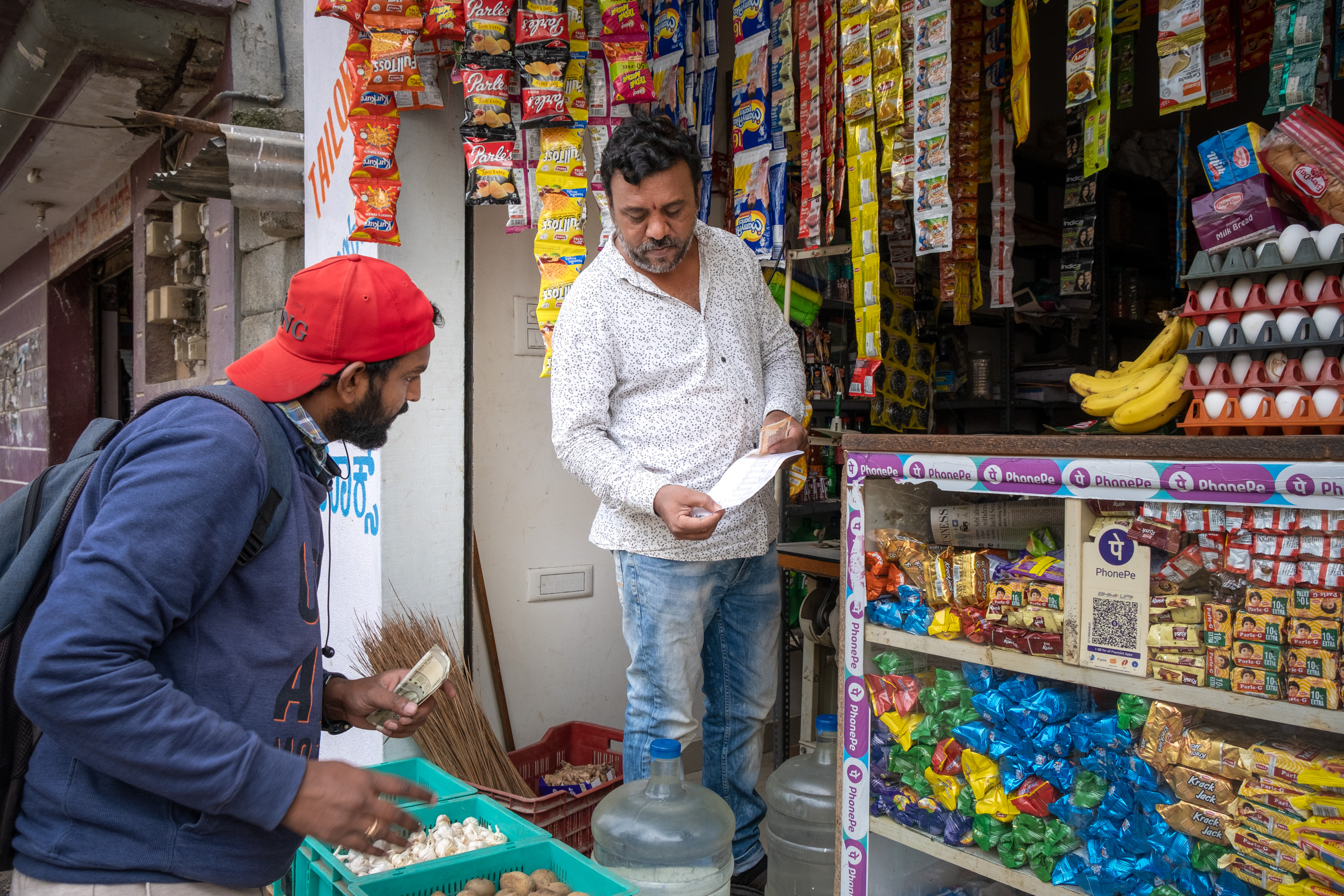 Jayappa S. runs two kiranas on the border of HSR Layout, an area in the south of Bangalore that's become a startup hub.APARNA NORI
Jayappa S. runs two kiranas on the border of HSR Layout, an area in the south of Bangalore that's become a startup hub.APARNA NORI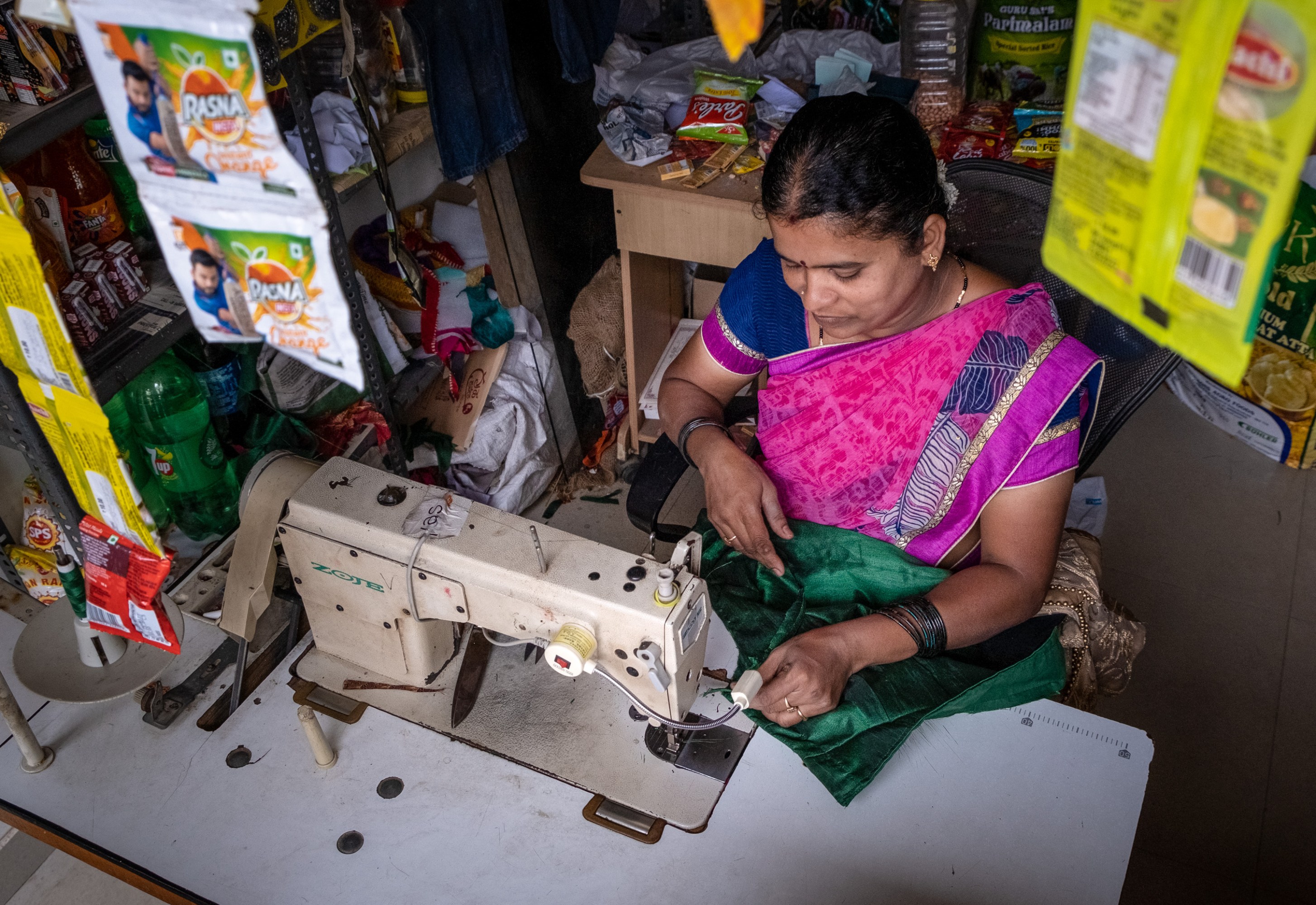 Jayappa's spouse,Shankaramma, used to work in the garment industry and stitches blouses to supplement income from sales at the shops.
Jayappa's spouse,Shankaramma, used to work in the garment industry and stitches blouses to supplement income from sales at the shops.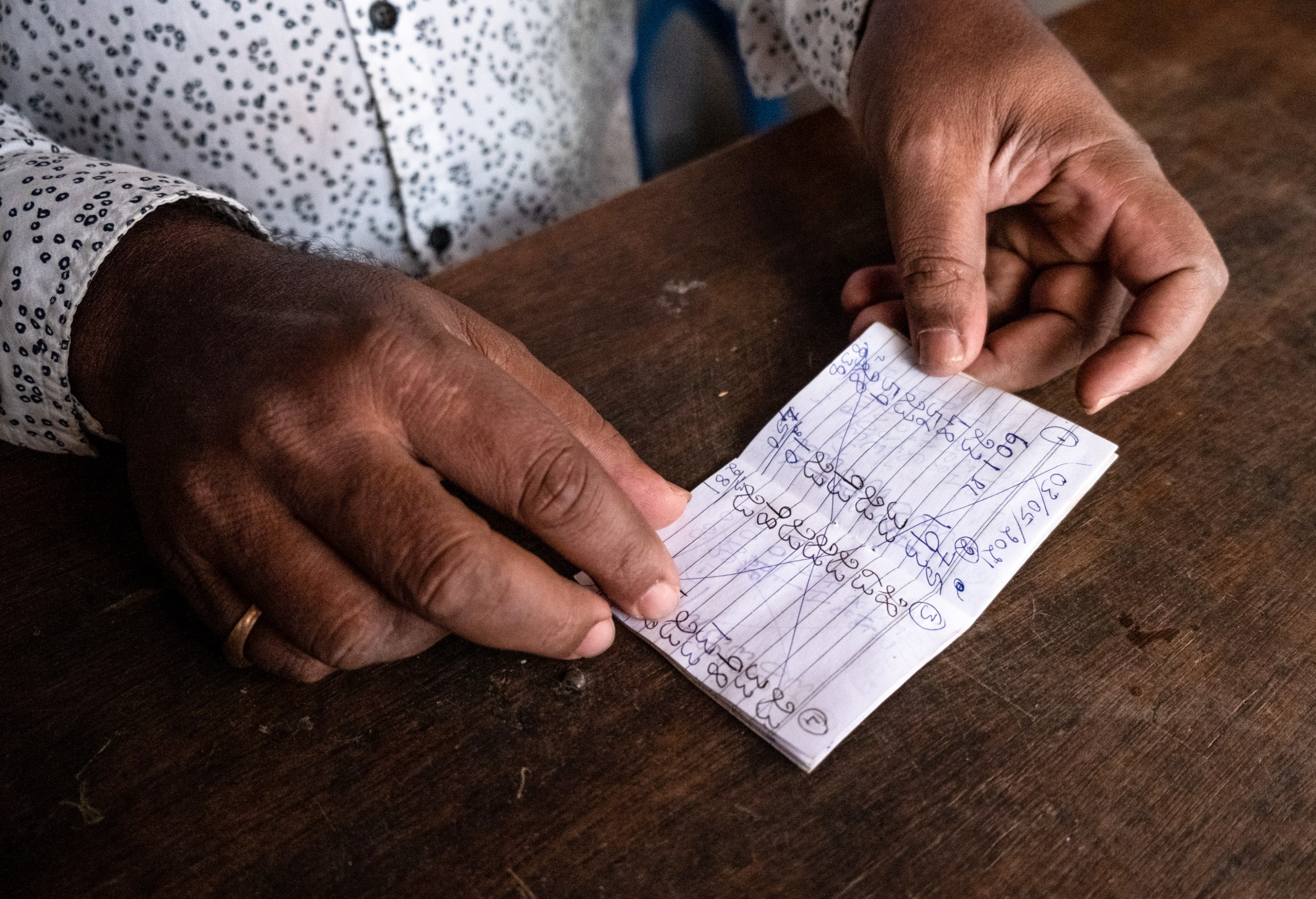 Jayappa goes over his bhai khata, thenotebook in which he keeps notes of credit he's extended to regular customers.
Jayappa goes over his bhai khata, thenotebook in which he keeps notes of credit he's extended to regular customers.It's like doing a service," says Narendra Gupta, who runs a kirana in Kolar, a small city about two hours from Bangalore, with his brother. Gayathri Prasad has been shopping at the Guptas' kirana for 15 years and wouldn't shop anywhere else. They are just like brothers," she says. When Prasad didn't have any money for about a month, the Guptas let her take what she needed and pay them back when she could. Kiranas cater to the needs of every class," says Rachana Sharma, a sociologist at Guru Nanak Dev University. That often isn't the case with many modern retail stores, which Sharma says often exclude the less well-off.
The granularity with which these shops understand their shoppers would be the envy of any e-commerce data science team, says Agarwal. In a country with six major religions, 121 languages, and thousands of castes, each with its own habits, diets, and traditions, knowing your customers is essential. The items kiranas stock are finely tuned to the makeup of their surrounding neighborhoods. Without the use of any kind of data-mining techniques, they are already, in their own crude way, doing analytics to understand their customers," he says.
Despite these unique strengths, a growing number of companies think kiranas are ripe for disruption. India's online grocery industry has grown quickly from a relatively small base, says Abhishek Gupta, a business consultant at Redseer, going from $500 million in 2016 to $5.5 billion by 2021. That growth came mainly from urban Indians who switched to doing their weekly bulk shopping online. But now some sense an opportunity to eat into the smaller, more frequent top-up purchases that Gupta says make up 60 to 70% of the average kirana's business.
Tapping that market requires an entirely different approach. Typically, goods purchased online are stored in large warehouses on a city's outskirts and take hours or days to ship to customers. Muscling in on kiranas' turf means building networks of smaller dark stores" embedded deep in the urban environment, making it possible to deliver items faster than a customer can walk to the local shop. Quick commerce, for the first time, has started disrupting the kirana spend," says Gupta. Redseer estimates that within five years the segment could be worth $5 billion.
The opportunity has set off a feeding frenzy. Zepto, a startup founded by a pair of 19-year-old Stanford dropouts, came out of stealth in November with a promise to deliver groceries in 10 minutes and has since raised a total of $360 million in venture backing. In December, Indian food delivery giant Swiggy said it would invest $700 million in its fledgling grocery business Instamart, and an online grocer called Grofers rebranded as Blinkit and dropped its conventional delivery service for a 10-minute guarantee. Ola, Uber's main rival in India, joined the 10-minute craze in January, announcing plans to expand its network of dark stores to 500 over six months. Dunzo had already launched its Dunzo Daily service last June but announced in March that it would more than double its dark-store count to 200.
While slower to warm to the idea, the country's largest online grocery company, BigBasket, launched a 10-minute delivery option in April. It had dipped its toe into quick commerce three years before with a trial of one-hour deliveries, says Seshu Kumar, head of buying and merchandising, but scrapped the service when it failed to gain traction. Then came the pandemic. Because kirana stores were closed, because of the lockdown restrictions in many areas, the customers had no option but to try e-commerce," he says.
While most went back to shopping in person as lockdowns waned, for a sizable portion the habit stuck. Now, people are realizing that these 10-minute delivery startups, instant-gratification startups-they can actually replace the need of a local kirana," says Vaibhav Khandelwal, CTO of Shadowfax, which provides logistics to a who's who of Indian e-commerce companies.
It's a huge logistical undertaking. Khandelwal estimates that each of the major players is operating several hundred dark stores across the country's biggest cities. Even with such a big footprint, ensuring timely deliveries requires streamlined processes for packing groceries, and cutting-edge demand forecasting to get delivery drivers in the right place at the right time. And the location of the dark stores is critical.
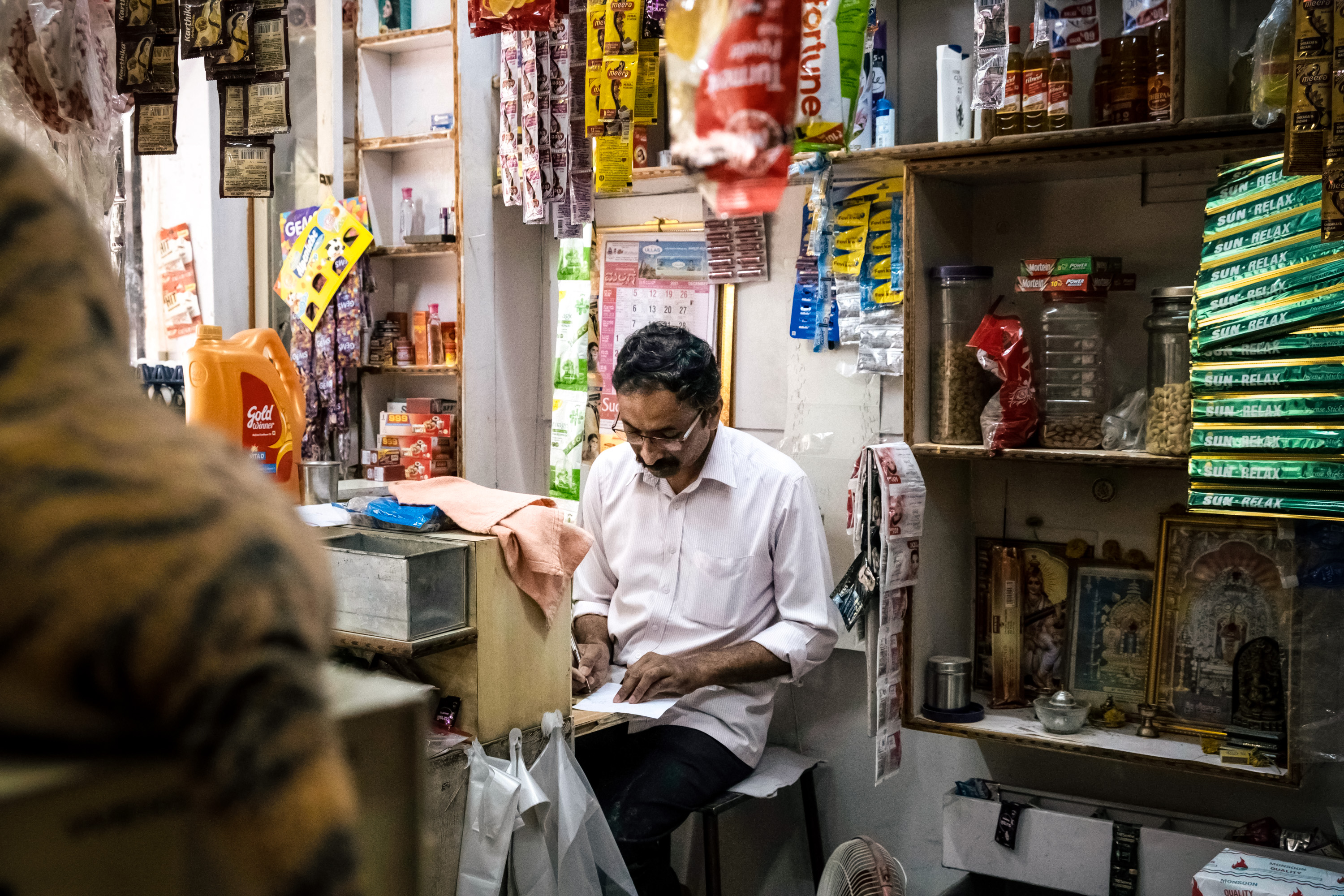 N. Sudhakar in his shop in Bangalore. APARNA NORI
N. Sudhakar in his shop in Bangalore. APARNA NORIThe core of it is network design," says Aadit Palicha, the CEO of Zepto. The goal is to reach as much of their target audience as possible while keeping average delivery distances to just 1.8 kilometers. And while a conventional supermarket might stock tens of thousands of products, quick-commerce firms have learned that most purchases come from a much smaller selection. It's a careful balancing act to ensure you can still meet customers' needs, says Palicha, but his company has found that about 3,000 products is enough to cover almost all of a customer's shopping basket.
Speed and selection aren't the only important criteria, says Dunzo CEO Kabeer Biswas. People pick and stick to a particular shop because they trust the quality of its offerings.
Most of our time at the organization is spent figuring how we can deliver the best produce," he says. The company uses image recognition to automatically assess the quality of fresh goods. It's also working with startup Qzense Labs, which produces a suite of sensors designed to measure things like ripeness, sweetness, and spoilage in fruit.
The long-term goal of these companies is hugely ambitious. In March, posters started popping up around Bangalore featuring a picture of a refrigerator with the text In loving memory of Sri Fridgesh Coolkarni, 1854-2022." It was a guerrilla marketing campaign from Dunzo suggesting that instant groceries would soon make the fridge obsolete.
You can decide what to make for dinner 10 minutes before you start cooking," says Palicha. The aim is to fundamentally alter consumer behavior by removing the need to plan purchases, he adds: When you give somebody a button to get something that they want in 10 minutes, they'll press it a lot more frequently."
For some, it seems to be working. Arshad Ayub, 33, used to shop once a week at a large supermarket and rely on local stores for things like vegetables, milk, and bread in between. But since trying Zepto for the first time in April, he's been converted. Instead of doing bulk shopping, now whatever is required on a daily basis, we just order and get it in the next 10 minutes," he says. I never had a situation where I needed something and I had to actually go to a local shop."
Reality checkIt's not surprising e-commerce companies are eager to get into groceries, says Arvind Singhal, founder of the India-based consulting firm Technopak, since grocery shopping accounts for two-thirds of the total Indians spend on merchandise each year. But that spending is spread across roughly 8,000 towns and 600,000 villages, the vast majority of which are well beyond the reach of online shopping. India's food grocery market is attractive in absolute numbers, but it is so fragmented that it's very difficult to consolidate," he says. Anybody who claims that the kirana is threatened does not understand anything about India."
Quick-commerce companies say they are focused on the affluent upper strata of city dwellers for now, but even then there are questions about the viability of the model. For one thing, India's big supermarket chains make pretax profits of only 5 to 6%, says Redseer's Gupta, even though they have no delivery costs and benefit from favorable supplier deals thanks to the volume of their business. Even if quick-commerce firms manage to reach similar scales, their additional logistics requirements mean they would be looking at margins of just 2 to 3%. And today they're a long way from any kind of profitability. Gupta says that on average, they are losing 15 to 25 rupees on every 100-rupee order they receive.
Cracks are starting to show. Less than four months after announcing its foray into quick commerce, Ola has scaled back its ambitions, reportedly laying off 2,100 dark-store workers in April. And in March, Blinkit found itself so short on cash that it had to take a $150 million loan from food delivery company Zomato, one of its main investors.
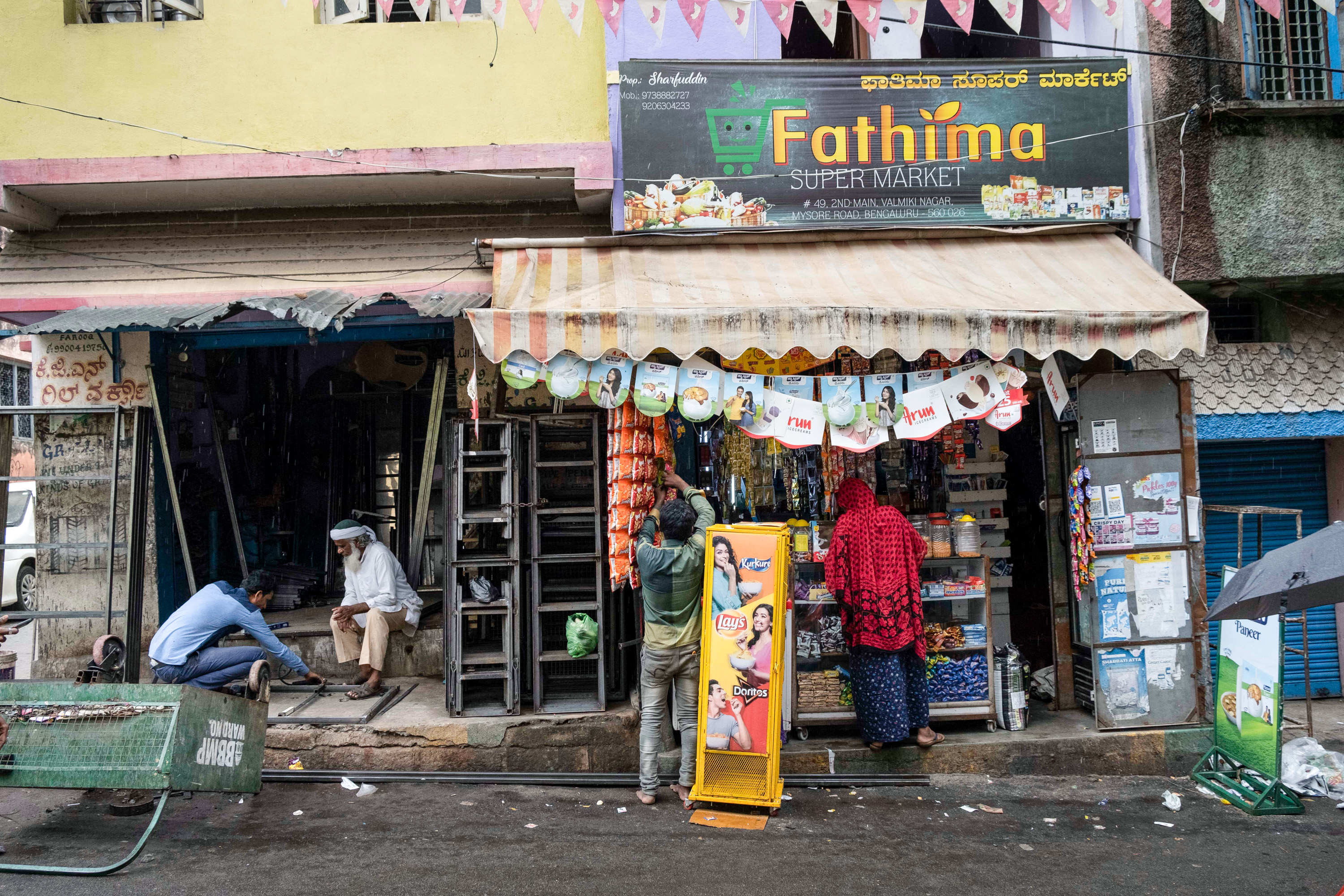 APARNA NORI
APARNA NORI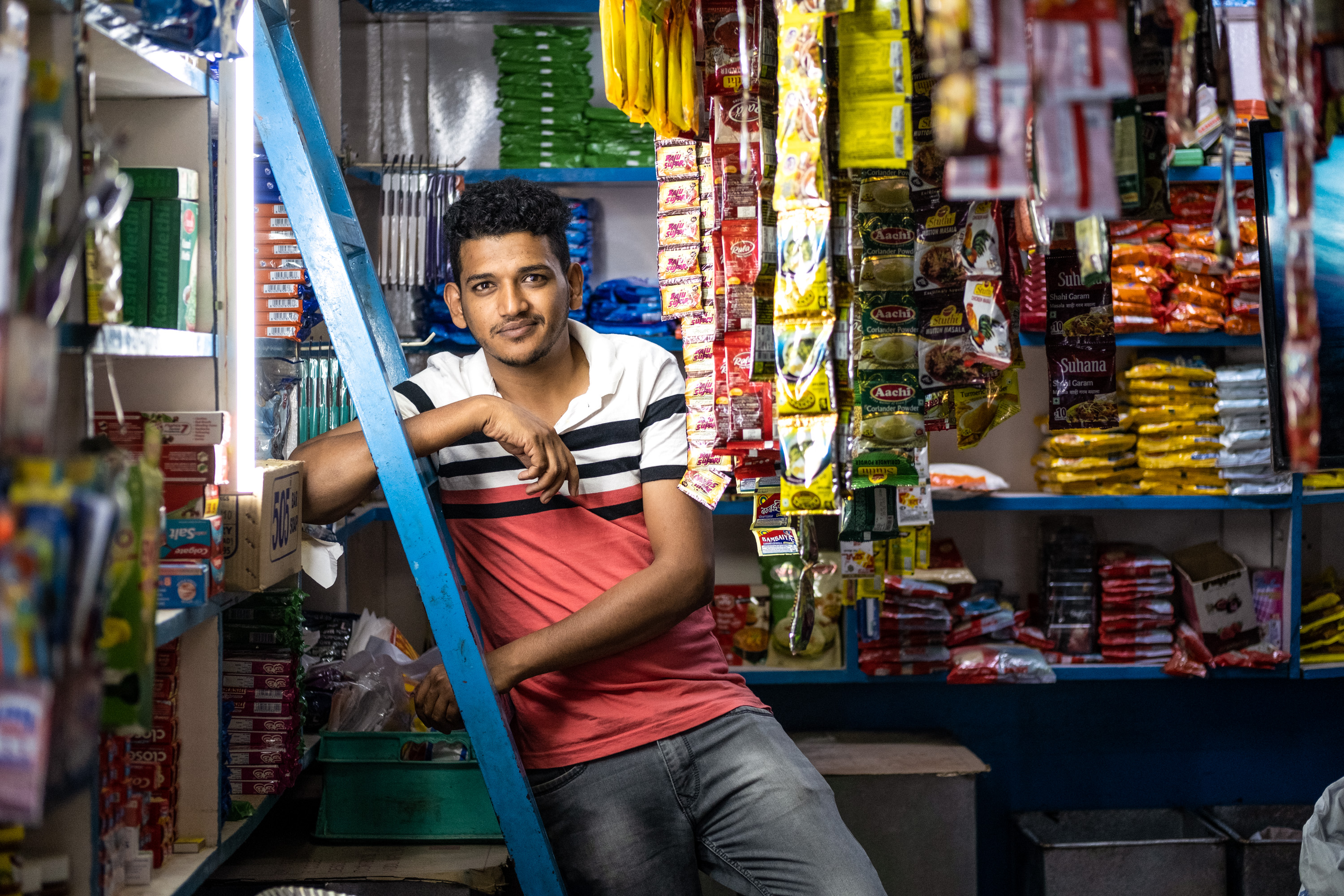
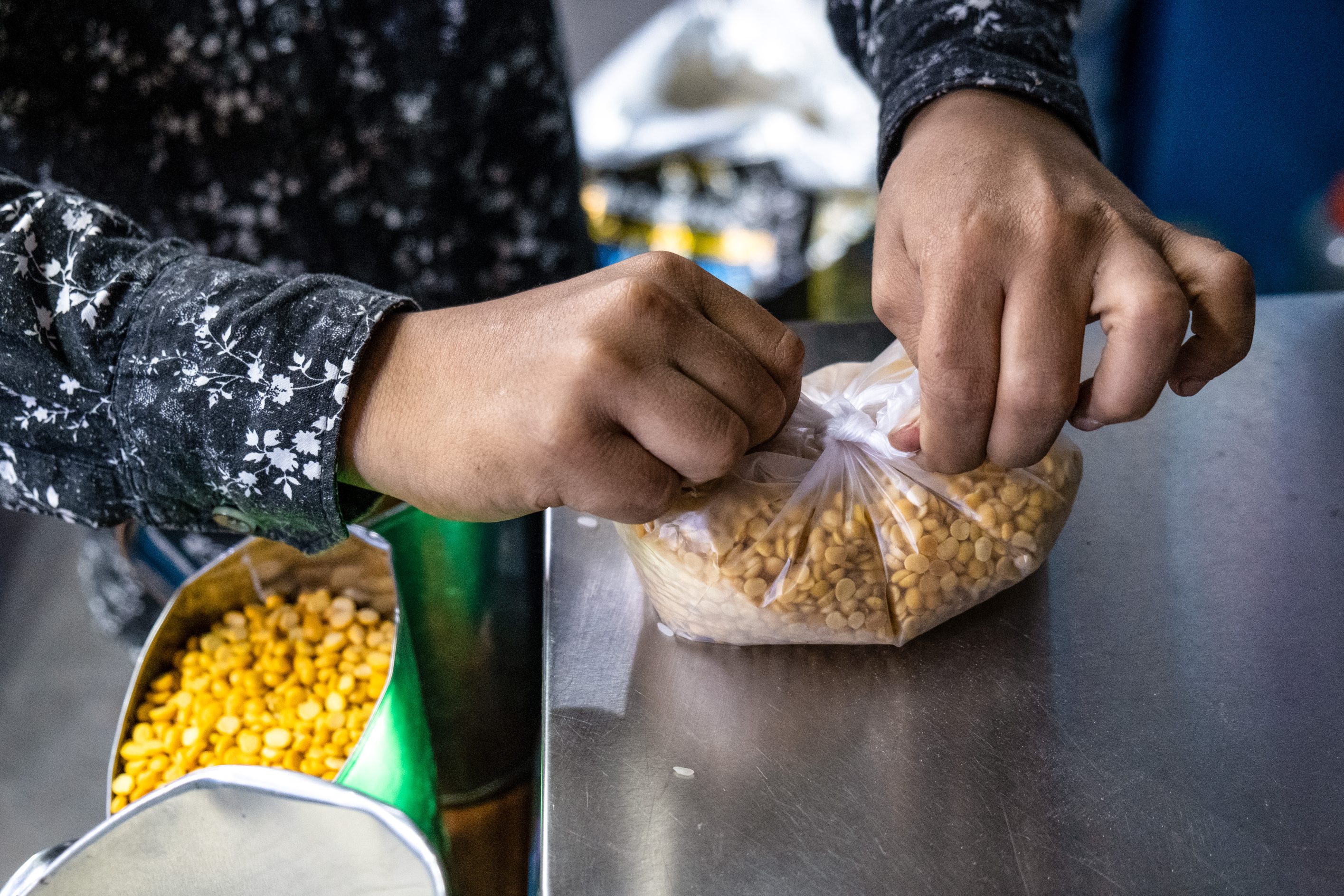
Kirana owner Sharfuddin in his shop in Chamrajpet, a neighborhood in Bangalore. He took over running the shop from his father about 15 years ago.
It's also not clear what problem they are solving, says Singhal, as most kiranas already take orders via WhatsApp and deliver to customers' doorstep. The only explanation, he says, is a global glut of capital groping around for investment opportunities in an era of low interest rates. To me, this excitement is on account of this unshackled pressure of money, which is forcing these entrepreneurs to defy economic sense," he says.
There are few signs the money taps will shut off soon, says Anand Ramanathan, a partner at Deloitte India. Investors have been throwing money at Indian startups for at least a decade, scrambling to get a foothold in a nation whose overall consumer markets could be worth $6 trillion by 2030, according to the World Economic Forum. Do any of these models make money? Is it sustainable? They're not even close," he says. It's all just a customer acquisition game."
India does have features that may make it a better fit for quick commerce than Western countries. Indians buy groceries more frequently than shoppers in the developed world, says Zepto's Palicha, and its crowded cities make it possible to reach a large number of customers from a single dark store. This model thrives on density," he says.
There is evidence that in parts of India's biggest cities, kiranas are starting to feel the pinch. In a residential neighborhood on the border of HSR Layout-an up-and-coming suburb in the south of Bangalore that has emerged as a major startup hub-shopkeepers were unanimous that online shopping was cutting into their profits. Ashraf Puncheehar says business at his shop has dropped by 20% in the last six months. Day by day, new companies are coming online," he says. You can't compete with them."
Even if it's unlikely that kiranas suffer a widespread die-off anytime soon, localized retrenchments are a possibility. That could lead to a process of what is known as infrastructural exclusion," says Aaron Shapiro, an anthropologist at the University of North Carolina at Chapel Hill. In the West, the shift from neighborhood stores to larger supermarkets saw companies abandon what they deemed unviable markets" in poor areas, leading to food deserts" where residents have limited access to healthy, affordable groceries. In India, the phenomenon could take on a unique flavor. Mohammed Ryaz, a regular customer at a kirana in Chamrajpet, says the shop was a lifeline to less tech-savvy customers during lockdowns. These are not educated people-they don't know how to place an order [online]," he says.
Another concern is the impact on delivery drivers. More than 80% of India's economy is informal, meaning workers have no official employment contract and aren't protected by employment laws. So for many Indians, gig work isn't markedly different from their alternatives. But the unpredictability of wages due to sporadic work and incentive-based earnings still bothers many gig workers, says Aditi Surie, a sociologist at the Indian Institute for Human Settlements (IIHS). It actually leaves people feeling this inner sense of precarity," she says. You have no way of really calculating what is going to happen with your wages next month."
A Dunzo delivery driver, who didn't want to be named, said he doesn't mind the work and regularly pulls 12-hour shifts. But it's only really worth his time if he hits an incentive target of 21 orders a day, which boosts his wages by nearly 50%. It is a waste if I don't get any incentives," he says. All my efforts are gone in vain." He typically hits the target eight to 10 days per month.
A helping handWhy, if India already has a hyperlocal retail network perfectly tuned to the needs of every community, should anyone spend money building a new one? A host of kirana tech" startups have decided there's no need. Instead, they're building tools to help the shops compete with the behemoths of modern retail. We see the network of kirana stores in this country as a national infrastructure comparable to probably the power grids or the railroads," says Prem Kumar, CEO of the digital technology company Snapbizz.
His company's products help kiranas track inventory, accept digital payments, and manage credit with customers and suppliers. Basic services can be accessed through a mobile app, but the company also rents out bar-code scanners combined with either a handheld payment terminal or a touch-screen check-out computer. Kiranas can also take orders online via an app, and the company has tie-ins with major brands that run promotions on items stocked by the stores.
A critical factor while designing technology for kiranas is keeping things simple, says Ravish Naresh, CEO of Khatabook, which produces a mobile app that acts as a digital version of the notebooks used to record purchases on credit. The app automatically tallies up debts and sends payment reminders to customers.
Others want to tap into the kirana network to provide financial services to their customers. PayNearby provides kiranas with a mobile app and mini card reader that lets them accept digital payments. It also turns them into neighborhood banks, says CEO Anand Bajaj, allowing customers to withdraw cash, transfer money to relatives, take out insurance, and even book travel tickets for a small commission.
What's had the biggest impact on kiranas, though, is the handful of business-to-business e-commerce apps providing shops with a supply infrastructure to rival the big retail chains. Traditionally, kiranas have sourced products from a many-layered network of distributors and wholesalers who each take a cut, says Sujeet Kumar, cofounder of one such business, Udaan. By aggregating the demand of more than 3.5 million kiranas, the company secures favorable deals with producers, cutting out the middlemen to reduce prices. Nearly every kirana MIT Technology Review spoke to said Udaan, and other B2B apps like Jumbotail and Jiomart, had boosted their business.
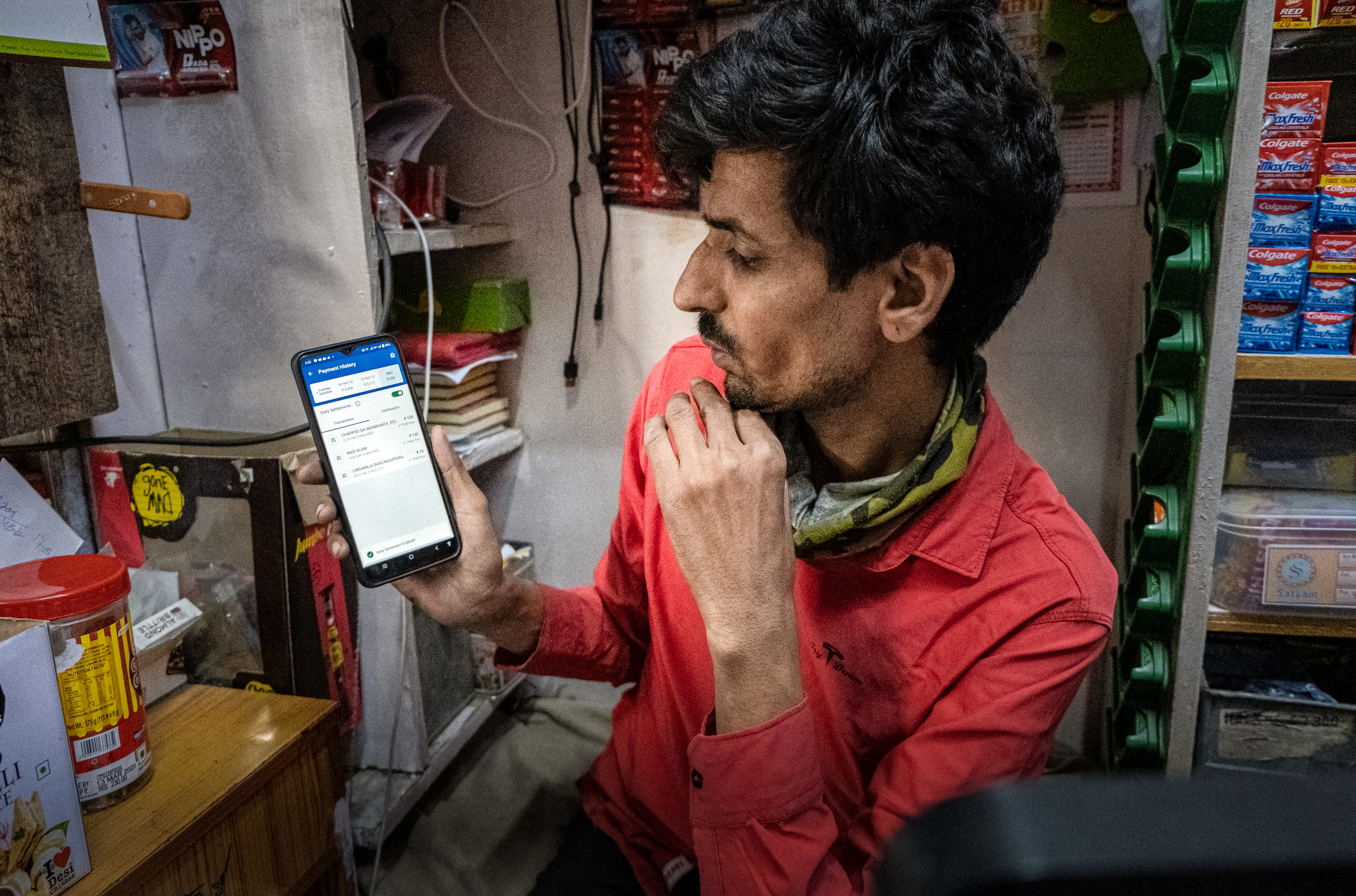 Dinesh Matahji,who owns a kirana in Chamrajpet, uses apps to help run his shop.Some of the kirana tech" that's been developed allows shop owners to take online orders and keep track of the credit they extendto customers.APARNA NORI
Dinesh Matahji,who owns a kirana in Chamrajpet, uses apps to help run his shop.Some of the kirana tech" that's been developed allows shop owners to take online orders and keep track of the credit they extendto customers.APARNA NORIEfforts to wrest control of the supply chain that feeds kiranas should raise some alarm bells, though, says IIHS's Surie. The fragmented, informal nature of traditional distribution systems provides a lot of resilience, she says, giving workers a panoply of options for quickly shifting between jobs as their circumstances change. Centralizing these tangled networks into a handful of tech platforms with scant government oversight could give some companies outsize control over the economic lives of millions. They become the orchestrators of demand and supply and market forces," she says.
Nonetheless, kiranas seem to have some allies in their battle for the street corner. And Snapbizz's Kumar thinks the range of technologies and services now available to them could dramatically reshape these micro-businesses. The kirana of the future will be a concierge for the household," he says-a one-stop shop providing everything their regular customers could want. He hopes that will help them flourish, and not just for their own sake.
The network of kirana stores that we have today is the infrastructure for getting essentials to the masses of this country," says Kumar. As of now, there isn't another viable option."